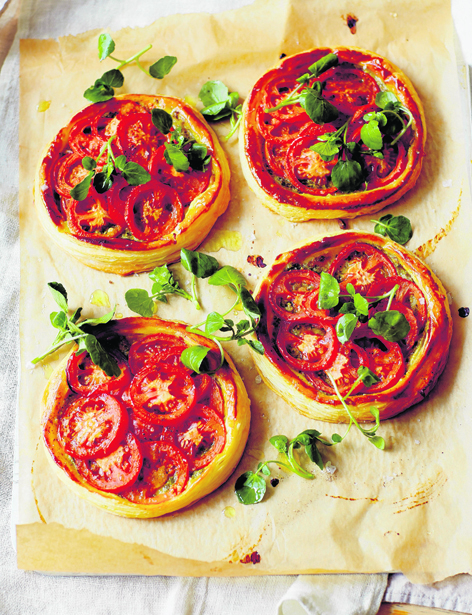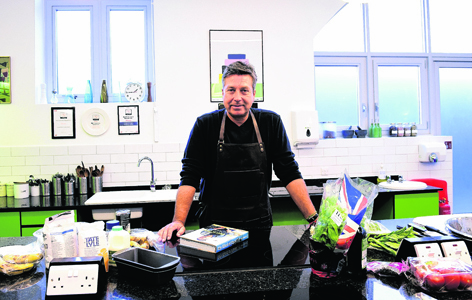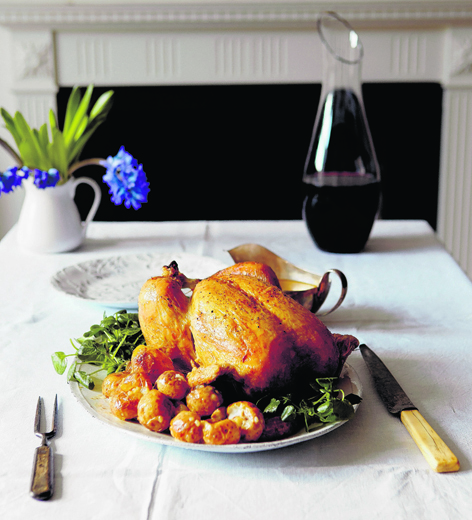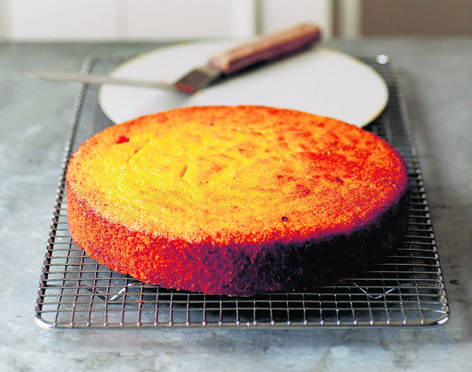Put MasterChef to the back of your mind when you’re cooking up family food, says judge John Torode, who gives us a homely cookery masterclass…
“What are you like in the kitchen?” asks MasterChef’s John Torode at the beginning of our cookery masterclass.
“I’m OK,” I grunt, a mental carousel of burnt biscuits, teeth-extracting pork joints and soggy bottoms whirling
to mind.
“Did anyone tell you that you had to be brilliant at cooking?” despairs the 50-year-old, with a world-weary sigh.
“People forget that their friends love them. They come around to your house for dinner not because they want you to show off to them.”
Evidently, I’m not the only one to feel coy about my cooking skills (or lack of) because John’s new cookery tome My Kind Of Food explores just that.
A deeply personal collection of recipes, the emphasis is on getting us back in the kitchen and having some fun there. And if that means using shop-bought condiments, so be it.
“Good food should be accessible to everybody and that’s what I’ve done with the book,” he says.
Here are three of John’s delicious dishes from My Kind Of Food…
ROAST CHICKEN WITH CREME FRAICHE, NEW POTATOES AND WATERCRESS
SERVES 6
200g creme fraiche
Half a lemon
4tsp vegetable oil
500g new potatoes
100g watercress
Salt and freshly ground black pepper
1tsp mustard (optional)
Heat the oven to 200C/gas 6. Season the inside of the chicken with salt and pepper, then spoon the creme fraiche into the cavity. Plug the end of the chicken with the lemon half. Rub the chicken with some of the oil, season well and then place in a roasting tin, breast up.
Roll the potatoes in the remaining oil and then scatter around the chicken. Place the chicken in the oven and roast for one hour 10 minutes without opening the oven door. Leave it.
Pick the largest stems off the watercress and put the lot into a large bowl filled with cold water. Push the watercress under the water and place the bowl in the fridge. The clean watercress will float to the top while all the dirt will sink to the bottom.
Take the chicken out of the oven. Pour the creme fraiche out of the chicken over the potatoes in the tin, then turn the chicken upside down onto a board and leave it to sit for 10 minutes so that all the juices flow back into the breast. It will be done.
Meanwhile, place the tin over a medium heat and bring to the boil, stirring the potatoes around the tin so all the lovely sticky bits come off the sides and make the sauce. Take it off the heat.
Lift the watercress out of the bowl and shake off the excess water. Put the chicken and potatoes onto a large platter, scatter over the watercress and pour yourself a congratulatory vat of wine.
Add a spoonful of mustard for a bit of spice in the creme fraiche.
TOMATO AND PESTO TARTS
MAKES 4 TARTS
 500g block puff pastry (all-butter, if possible)
500g block puff pastry (all-butter, if possible)
Plain flour, for dusting
1 egg, beaten
2tbsp pesto (home-made or just use a jar)
8 plum tomatoes, sliced
Salt and freshly ground black pepper
TO SERVE
100g watercress
10ml peppery olive oil
Heat the oven to 220C/gas 7. Line a baking sheet with baking paper.
On a lightly floured worktop, roll the puff pastry out until it is about 2cm thick. You will need to cut four circular discs from the pastry, so find a small plate or saucer that’s about 16cm in diameter to use as a template. Place the plate over the pastry and run a sharp knife around the edge to cut out the first disc. Repeat until you have four.
Now you need to lightly score a margin about 1.5-2cm in from the edge of the pastry discs, so find a smaller plate or bowl that you can use as a template. Place the smaller plate in the centre of each pastry disc and lightly run a sharp knife around the edge, being careful not to cut all the way through.
Lift the disks onto a baking sheet and brush with the beaten egg. With a fork, prick the inner circle but not the outer edge – this will stop the pastry from rising in the middle, but will allow the outer edge of the tart to rise up.
Take a good amount of the pesto and spread it over the inner circle of each tart. Place the tops and bottoms of the tomatoes in the centre of the tarts, then start to lay the slices on top of the pesto so they overlap and create a swirl effect – it should look a bit like a Catherine wheel. Season with salt and pepper.
Place the tarts in the oven and bake for 20-25 minutes, until well risen and coloured. Mix the watercress with the olive oil and serve with the tarts.
STICKY ORANGE POLENTA CAKE
MAKES 1 CAKE
2 lemons
180g blanched almonds
4 eggs
Big pinch of salt
170g caster sugar
80ml olive oil, plus extra for greasing
150g polenta
10g baking powder
FOR THE SYRUP
Juice of 2-3 Seville oranges (about 150ml)
75g caster sugar
Heat the oven to 180C/gas 4. Grease a 23cm springform cake tin.
Put one orange and one lemon into a large pan, cover with water, and place a circle of greaseproof paper over the top so the fruit sits under the water. Bring to the boil, then reduce the heat and simmer for about 30 minutes. Take off the heat.
Toast the blanched almonds in a dry frying pan. Put them in a food processor and blitz until finely ground. Set aside.
Take the cooked orange and lemon out of the pan. Cut them in half and pick out the seeds. Juice the other fresh orange and lemon (throw away the shells). Put the cooked fruit (skins and all) and extra freshly squeezed juice in the food processor and blend to make a paste.
In a large bowl, beat the eggs with the salt until foaming. Add the sugar and beat again, then add the orange paste, almonds and olive oil. Beat again.
In a separate bowl, mix the polenta and baking powder, then gently fold this into the orange mixture until it is all mixed together.
Pour the mixture into the greased tin and bake for 50 minutes, or until a skewer inserted into the centre comes out clean.
Meanwhile, make the syrup. Put the orange juice and sugar in a pan and simmer over a low heat until you have a glossy syrup.
Turn the cake out of the tin onto a serving plate and pour the syrup over it while it’s warm.
My Kind Of Food by John Torode is published in hardback by Headline


